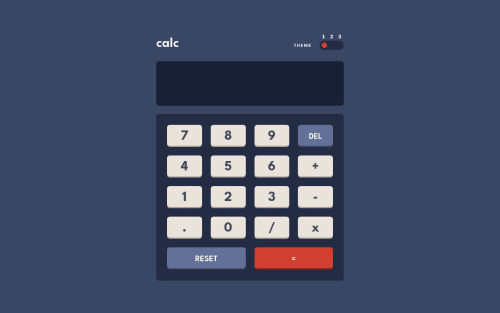Vintage Calculator of your dreams! (with react, typescript, sass)

Solution retrospective
Kinda proud of this one. In the previous challenge I encountered strange(for me) behaviour of type=number inputs with react+ts, and this time I decided to do all validations manually. It ended up pretty wild, I basically hardcoded every button's behaviour in every situation following my idea of how a real calculator should behave. I like how it came together, this is not the code to be proud of, but it does the job well! I could find only one sequence of actions that lead to NaN on the calculator screen, and it's not a straightforward one(can you find it?)
The stuff I wanted, but failed to implement:
- Make screen overflow to the left and stay aligned to the right when there are lengthy numbers. It's working now with
justify-content: flex-endbut for some reason it's not scrollable with flex. Without flex,overflow: autodoes it's job, but it overflows to the right despite that the content is aligned to the right. I tried approaches withdirection: rtl- no luck, I triedscrollIntoView- it kinda does the job, but it also scrolls vertically and that's bad UX in my opinion. I went with flex in the end. - Issue related to the previous one - what to do with number with a lot of digits? Given that I chose flex with no scroll I decided to round decimals to 12 digits so a number like 0.333(3) is visible on the screen. It doesn't work for big numbers but it's something. I also made the screen expandable into two lines when there are long numbers, not sure about this decision.
- How to handle all ⌨keyboard 👇events of the whole page? Now keyhandler is on the main div, but if we click away it loses focus. We can't put a keyhandler on the body, can we?
That was a great challenge which I really enjoyed, I appreciate any feedback!
Please log in to post a comment
Log in with GitHubCommunity feedback
No feedback yet. Be the first to give feedback on turtlecrab's solution.
Join our Discord community
Join thousands of Frontend Mentor community members taking the challenges, sharing resources, helping each other, and chatting about all things front-end!
Join our Discord